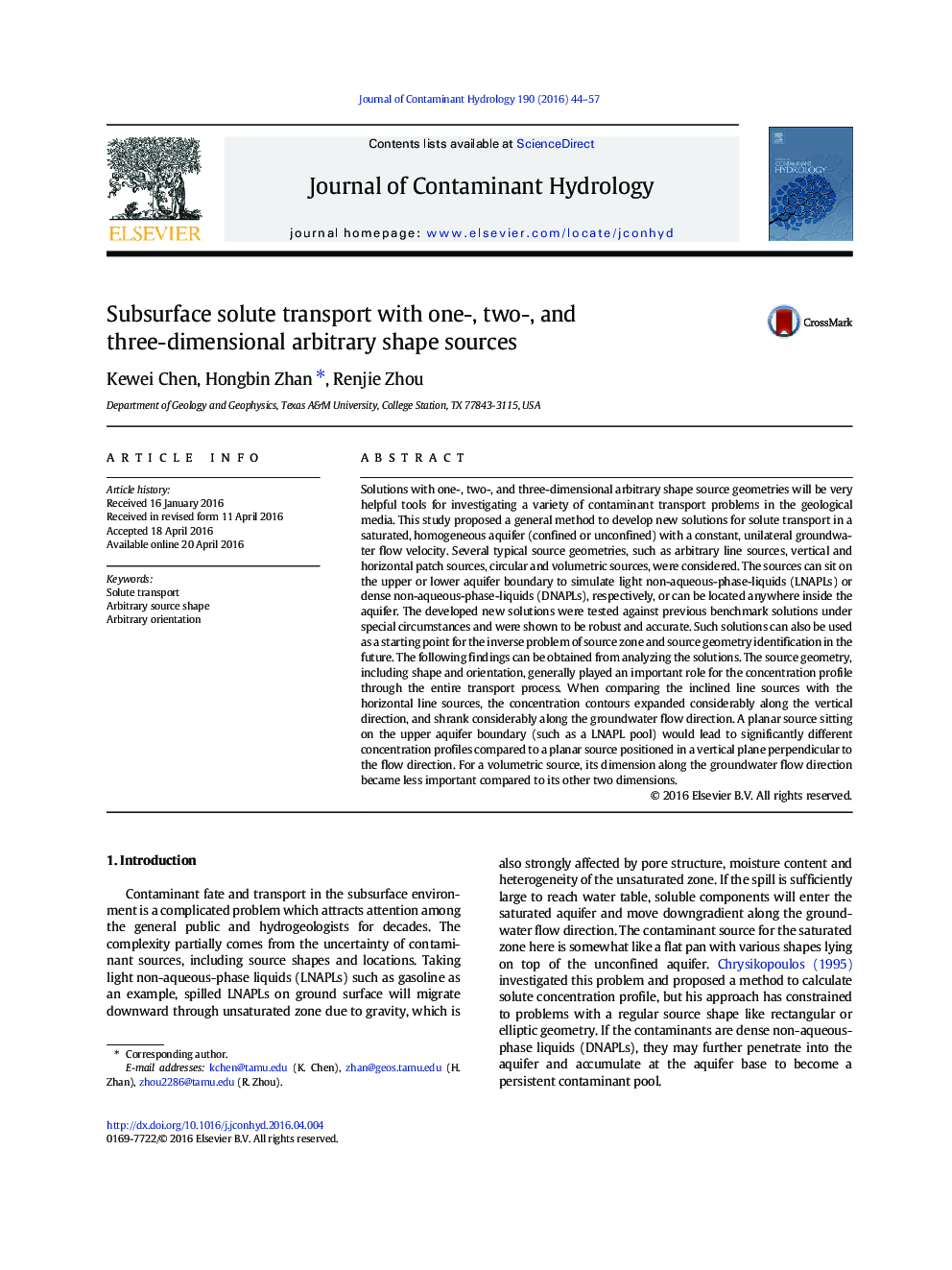| کد مقاله | کد نشریه | سال انتشار | مقاله انگلیسی | نسخه تمام متن |
|---|---|---|---|---|
| 4546360 | 1627021 | 2016 | 14 صفحه PDF | دانلود رایگان |
• A new general analytical approach for studying solute transport
• The approach deals with arbitrary source geometries and source positions.
• The solution can be applied to study LNAPL and DNAPL transport.
• A library of tested solutions for a variety of 1D, 2D, and 3D sources
Solutions with one-, two-, and three-dimensional arbitrary shape source geometries will be very helpful tools for investigating a variety of contaminant transport problems in the geological media. This study proposed a general method to develop new solutions for solute transport in a saturated, homogeneous aquifer (confined or unconfined) with a constant, unilateral groundwater flow velocity. Several typical source geometries, such as arbitrary line sources, vertical and horizontal patch sources, circular and volumetric sources, were considered. The sources can sit on the upper or lower aquifer boundary to simulate light non-aqueous-phase-liquids (LNAPLs) or dense non-aqueous-phase-liquids (DNAPLs), respectively, or can be located anywhere inside the aquifer. The developed new solutions were tested against previous benchmark solutions under special circumstances and were shown to be robust and accurate. Such solutions can also be used as a starting point for the inverse problem of source zone and source geometry identification in the future. The following findings can be obtained from analyzing the solutions. The source geometry, including shape and orientation, generally played an important role for the concentration profile through the entire transport process. When comparing the inclined line sources with the horizontal line sources, the concentration contours expanded considerably along the vertical direction, and shrank considerably along the groundwater flow direction. A planar source sitting on the upper aquifer boundary (such as a LNAPL pool) would lead to significantly different concentration profiles compared to a planar source positioned in a vertical plane perpendicular to the flow direction. For a volumetric source, its dimension along the groundwater flow direction became less important compared to its other two dimensions.
Journal: Journal of Contaminant Hydrology - Volume 190, July 2016, Pages 44–57
